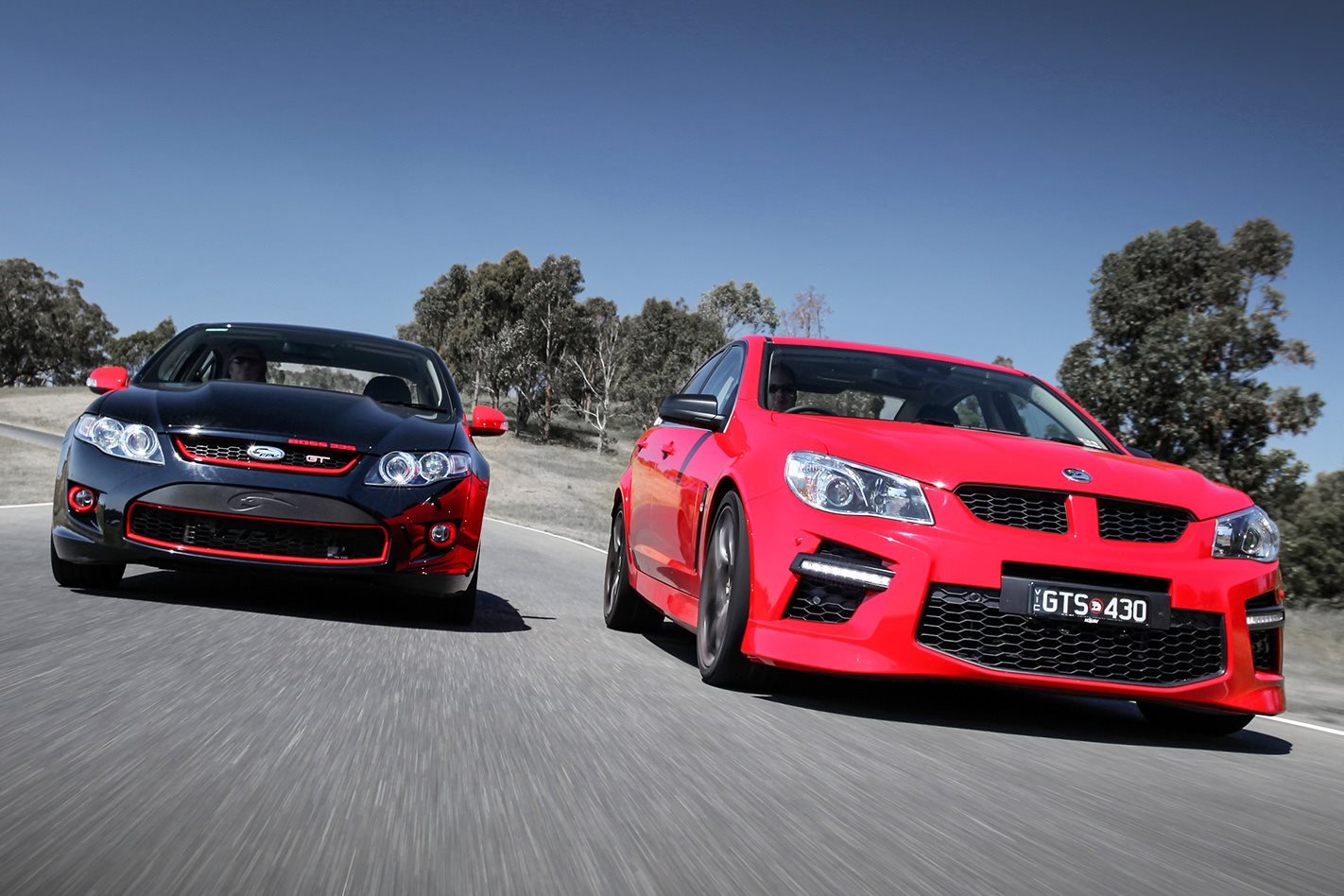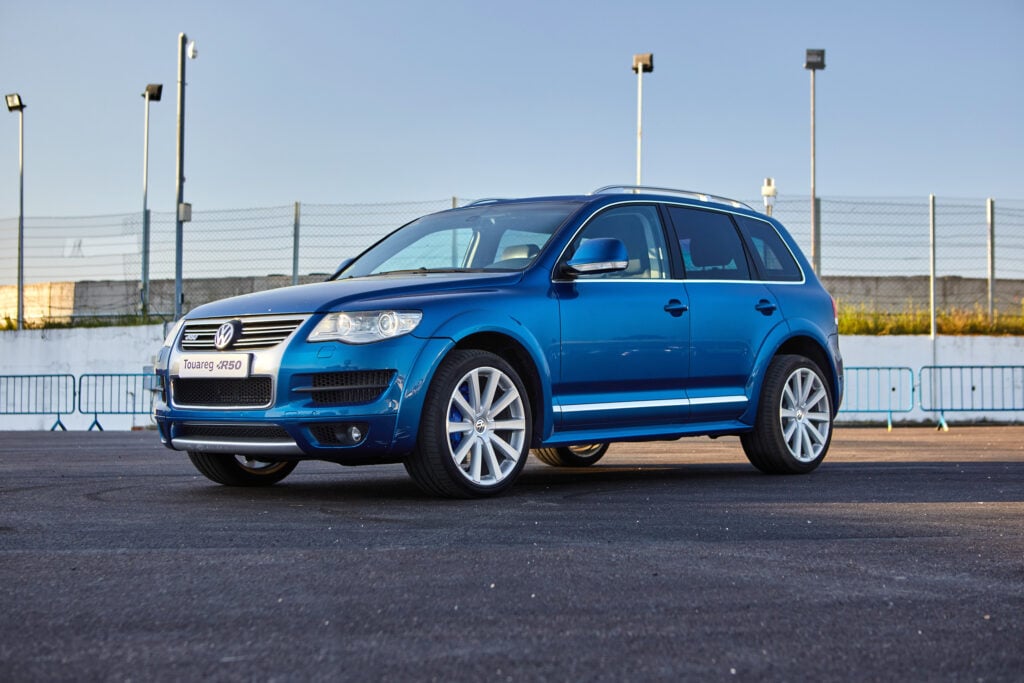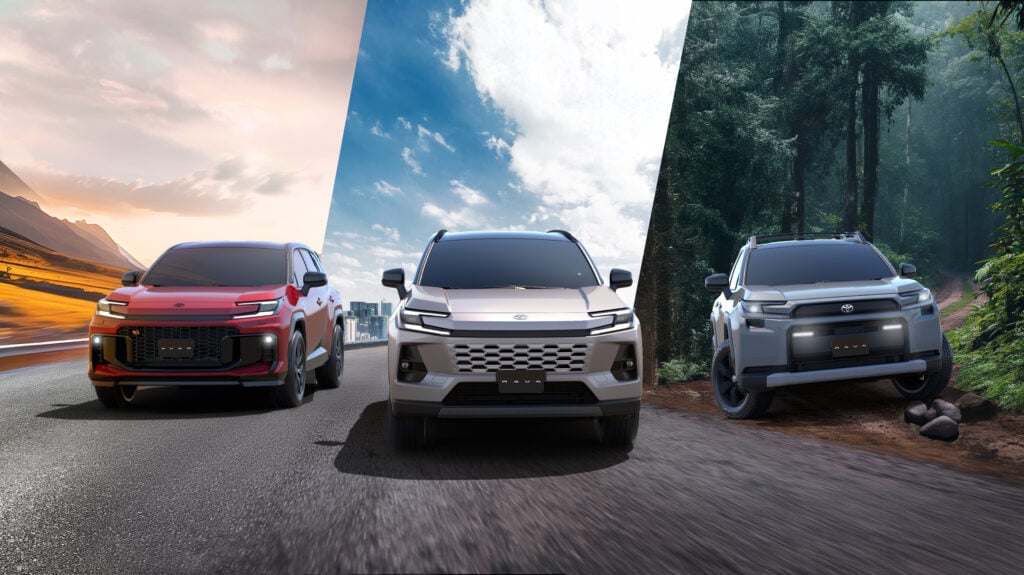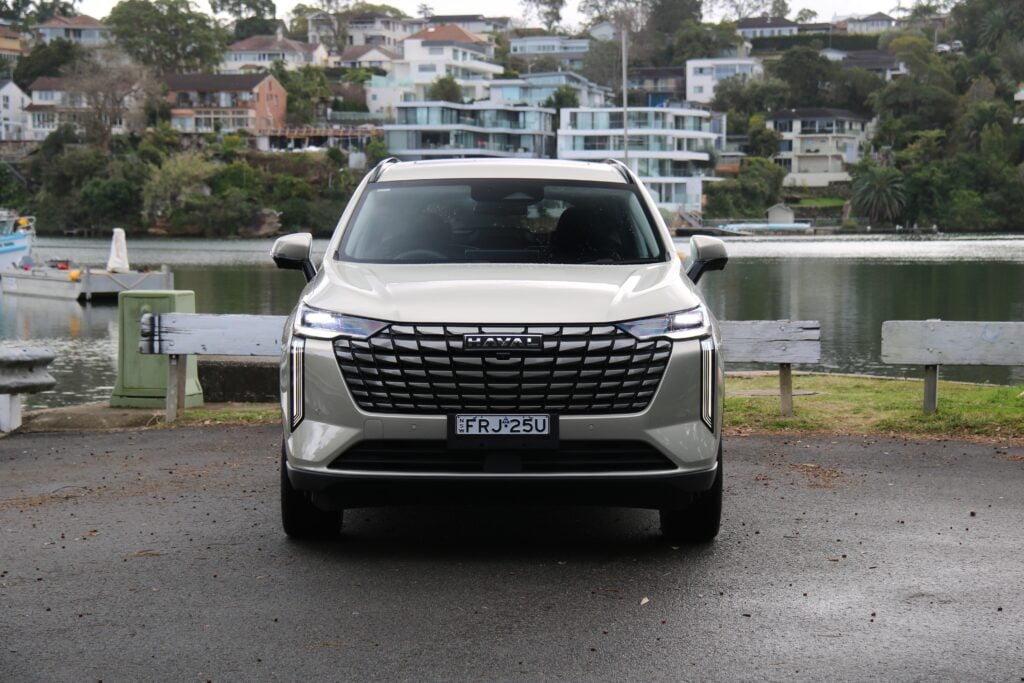There are several theories for the extinction of the dinosaurs all those millions of years ago.
This story was originally published in our January 2014 issue
Some say they all drowned in a great flood. Others speculate they were hunted and eaten by aliens. Everybody’s got a theory. But my favourite (mainly because it’s the one I’d most like to see made into a movie) is the one where a meteorite clobbers Earth, sending up a huge cloud of ash and dust that blocks out the sun and leads to an ice age which kills everything apart from cockroaches and Toyota Camrys. Cool.
Anyway, there’s a new extinction due soon and, even though fans of the breed may rankle at the use of the term ‘dinosaur’ it’s true that, in Darwinian terms, both the HSV GTS and FPV GT R-Spec are at the end of the evolutionary road. The genetic code is on the wall.
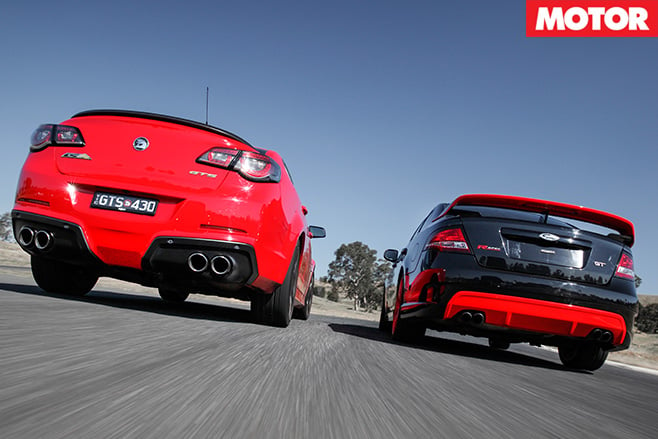
So she’s a done deal then? Well, yes, but let’s not get ahead of the plot here. It hasn’t happened yet and, if the current generation of heavy-hitting Aussie muscle cars are anything to go by, we’ll all miss the big lugs when they’re gone. See, they might be nearing their use-by date, but the latest offerings from both Ford (via FPV) and Holden (courtesy of HSV) are without a shadow of a doubt the best, most specialised versions of Rapidus Australis we’ve ever seen.
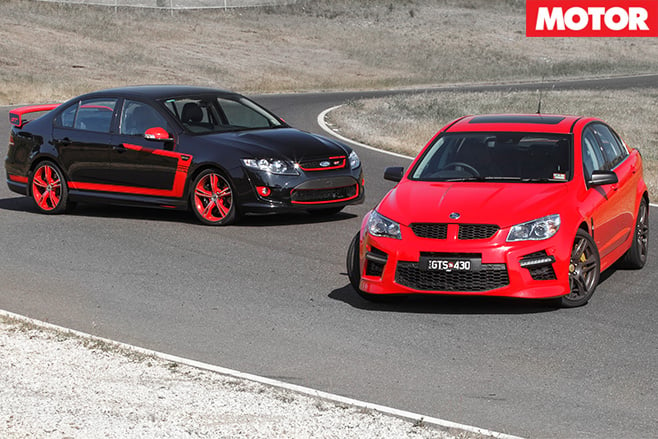
Both have evolved in similar ways to arrive at this final specification, too. Both use V8 engines, a mighty 6.2-litre pushrod unit in the HSV; a smaller, 5.0-litre V8 for the FPV which makes up for its cee-cee deficit thanks to DOHC heads.
Crucially, though, both engines use forced induction in the form of a twin-screw supercharger sitting up high and mighty on top of the engine and blowing nothing but sunshine.
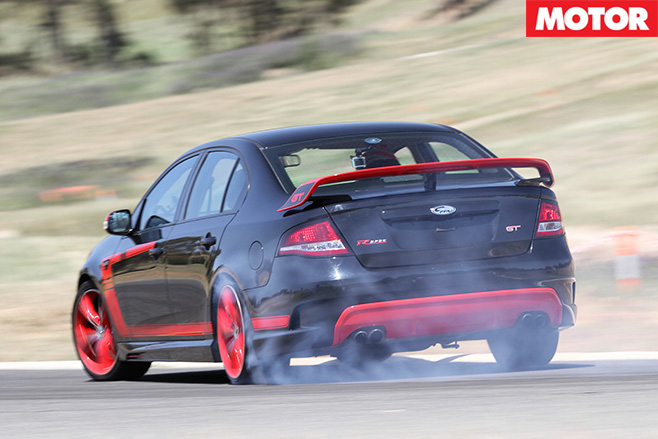
But the new HSV GTS simply blows that number into a cocked injector hat. With 430kW, the LSA V8 is the new king of the kids and even if the official number sells the Ford V8 short, it still can’t march up the front with the GTS’s monster mill.

This time around, both cars were autos, which kind of makes sense in the context of what people are actually buying. They’re both six-speeders and both have been hailed as good things in the past. In fact, we were knocked out by the ZF in the FPV when teamed with the blown V8, but the unit fitted to the HSV now seems at least as good and maybe even a bit slicker shifting.
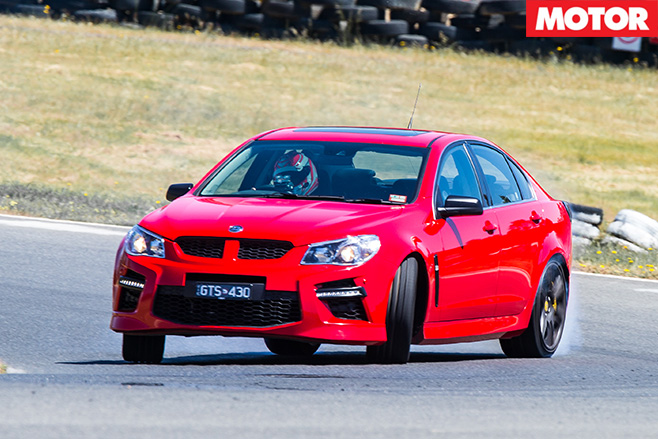
Of course, even without launch control, the GTS is still a genuine mid-12-second car. But the margin between it and the FPV is much smaller than you might imagine, as our best time at Heathcote of 12.75 seconds at 182.46km/h proves.
Things get tough for the FPV from there, though. Under brakes, the HSV has it on toast for feel and actual retardation, and mid-corner speed is an easy win to Team Red. Even at moderate speeds on a racetrack you can easily feel the differences between the two.
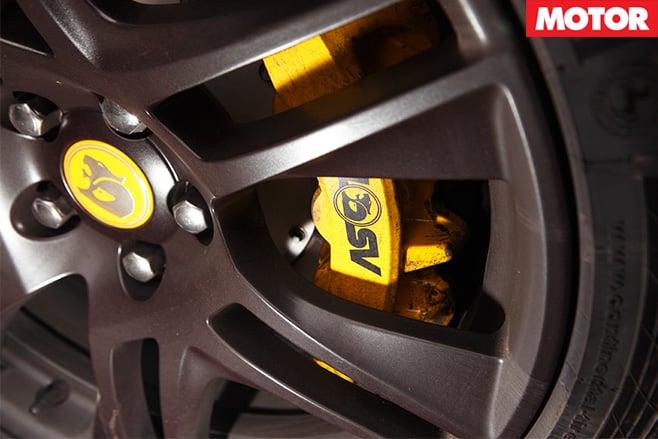
In contrast, the FPV requires a more deft touch, not because there’s more grunt (quite the opposite) but simply because there’s less grip. Even with revised suspension control blades that enable the FPV to use a wider rear-wheel/tyre combo, there’s still every opportunity to haze ’em if you get too liberal.
There’s also more body roll in the FPV and an overall set-up that requires you to wait and perform each function in turn rather than overlapping the steering, throttle and braking inputs like you can with the GTS.
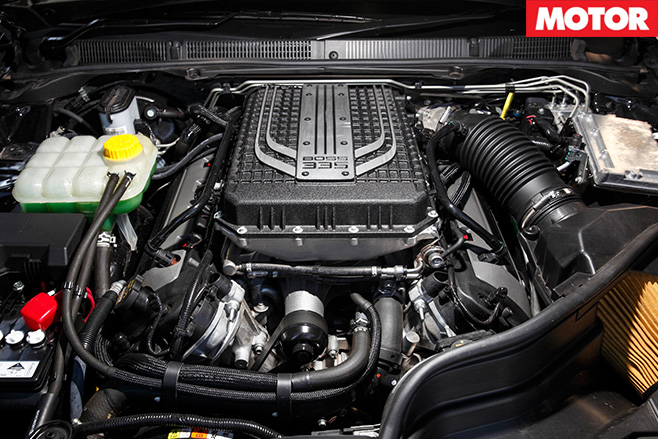
Of course, the FPV would still be one helluva long distance car (as has every V8 Falcon ever made, but particularly from BA onwards) but it simply hasn’t the side-step to cut it as a track day car. Not if there’s a GTS in attendance, anyway.
So it was no real surprise to find that the GTS absolutely thumped the R-Spec ’round the tight little Broadford complex in central Victoria. In the fresh-from-the-Bathurst-podium hands of W. Luff Esq., the GTS was coaxed around Broadford in 1:05.6, handing the FPV its ass on a platter with a 1:08.8.
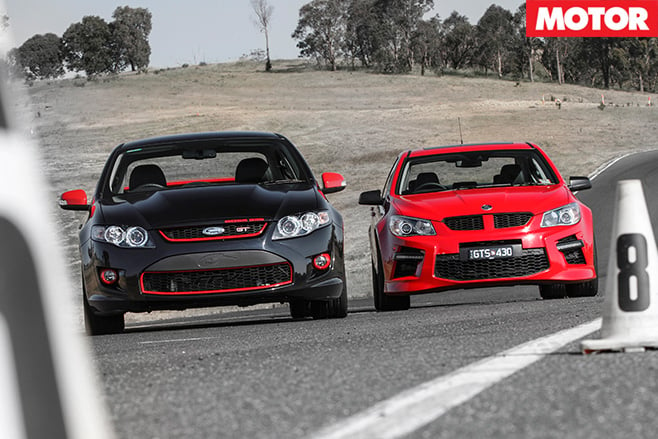
But like I said, even on the road, the GTS has the game shot to bits. There’s a degree of balance and poise that just hasn’t been seen in Holden-based big cars for many years (maybe even ever) and the chuckability of the thing belies its mass and size and completely deals with that brutal engine. This is no mean feat, which is probably why it’s taken two-and-a-half decades of HSVs to pull it off.
It ain’t, of course, all skittles. Why, for instance, in 2013 when even humble hatchbacks have them, do neither HSV nor FPV get a set of shift paddles? Okay, so either gearbox is probably best left to its own rather clever devices for the most part, but there comes a time when the road gets all twisty and you reach for a paddle to prod. Tough luck in this company, pal.
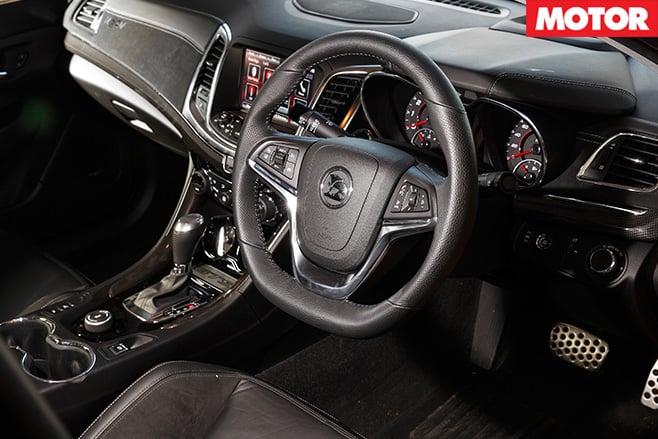
But to be honest, I didn’t find a single setting that gave me the sort of steering feedback I was after. And that’s odd, because a Clubsport I drove a few weeks back had really nice steering, yet the GTS can’t seem to replicate this.
Either way, though, the HSV is a sharper tool than the FPV which still feels it has some kind of filter between the front wheels and the tiller. It’s not bad in isolation, but back to back with the HSV, the R-Spec seems a little more deadpan. The seating position surely doesn’t help and, while we’ve given Ford (and FPV) all kinds of stick over the years for the Falcon’s appalling seat-pedal-wheel relationship, nothing’s been done about it.
So it still feels like you’re sitting on the FPV rather than in it and the steering wheel is still in your lap. And I won’t even mention the fact that you need to insert the ignition key with your right hand and hit the stupid starter button with your left. Oh, oops.
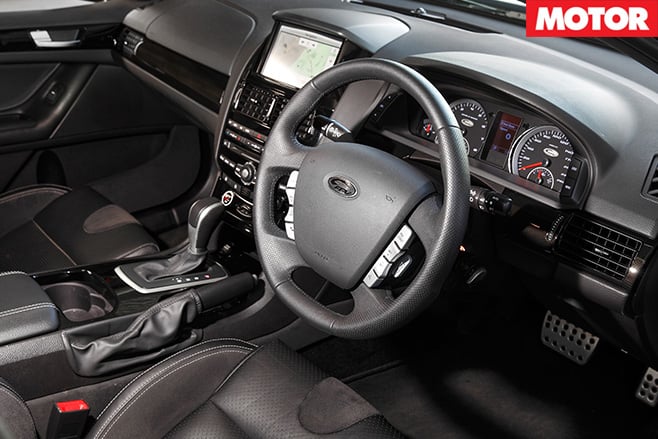
Live with it, we say, because if the supercharged GTS isn’t the best thing to roll out of a local car factory, we can’t think of what is. Except, you won’t be able to live with it much longer, because that damn meteor is that little bit closer to Earth now than it was when you started reading this.
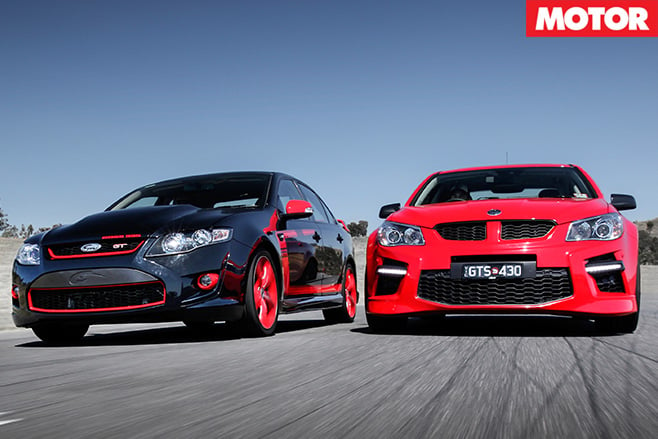
| u00a0 | u00a0 | u00a0 | u00a0 | 4.5/5 | u00a0 | u00a0 | u00a0 | 3.5/5 |
| u00a0 | u00a0 | u00a0 | u00a0 | u00a0 | u00a0 | u00a0 | u00a0 | u00a0 |
| u00a0 | u00a0 | u00a0 | u00a0 | HSV GTS | u00a0 | u00a0 | u00a0 | FPV GT R-spec |
| Body | u00a0 | u00a0 | u00a0 | 4-door, 5-seat sedan | u00a0 | u00a0 | u00a0 | 4-door, 5-seat sedan |
| Drive | u00a0 | u00a0 | u00a0 | rear-wheel | u00a0 | u00a0 | u00a0 | rear-wheel |
| Engine | u00a0 | u00a0 | u00a0 | 6162cc V8, OHV, 16v, supercharger | u00a0 | u00a0 | u00a0 | 4951cc V8, DOHC, 32v, supercharger |
| Bore/Stroke | u00a0 | u00a0 | u00a0 | 103.25 x 92.0mm | u00a0 | u00a0 | u00a0 | 92.2 x 92.7mmu00a0 |
| Compression | u00a0 | u00a0 | u00a0 | 9.1:1 | u00a0 | u00a0 | u00a0 | 9.25:1 |
| Power | u00a0 | u00a0 | u00a0 | 430kW @ 6150rpm | u00a0 | u00a0 | u00a0 | 335kW @ 5750rpm |
| Torqueu00a0 | u00a0 | u00a0 | u00a0 | 740Nm @ 3850rpm | u00a0 | u00a0 | u00a0 | 570Nm @ 2200-5500rpm |
| Power-to-Weightu00a0 | u00a0 | u00a0 | u00a0 | 229kW/tonne | u00a0 | u00a0 | u00a0 | 180kW/tonne |
| 0-100km/hu00a0 | u00a0 | u00a0 | u00a0 | 4.55sec (tested) | u00a0 | u00a0 | u00a0 | 4.67sec (tested) |
| Top Speedu00a0 | u00a0 | u00a0 | u00a0 | 250km/h (limited) | u00a0 | u00a0 | u00a0 | 250km/h (limited) |
| Consumptionu00a0 | u00a0 | u00a0 | u00a0 | 15.7L/100km (claimed) | u00a0 | u00a0 | u00a0 | 13.7L/100km (claimed) |
| Emissions | u00a0 | u00a0 | u00a0 | 369g/km CO2 (claimed) | u00a0 | u00a0 | u00a0 | 325g/km CO2 (claimed) |
| Transmissionu00a0 | u00a0 | u00a0 | u00a0 | 6-speed automatic | u00a0 | u00a0 | u00a0 | 6-speed automatic |
| Weightu00a0 | u00a0 | u00a0 | u00a0 | 1893kg | u00a0 | u00a0 | u00a0 | 1862kg |
| Suspensionu00a0 | u00a0 | u00a0 | u00a0 | A-arms, magnetic dampers, anti-roll bar (f); multi links, coil springs, magnetic dampers, anti-roll bar (r) | u00a0 | u00a0 | u00a0 | Double A-arms, coil springs, anti-roll bar (f); multi-links, coil springs, anti-roll bar(r) |
| L/W/Hu00a0 | u00a0 | u00a0 | u00a0 | 4988/1899/1457mm | u00a0 | u00a0 | u00a0 | 4970/1868/1453mm |
| Wheelbaseu00a0 | u00a0 | u00a0 | u00a0 | 2915mm | u00a0 | u00a0 | u00a0 | 2838mmu00a0 |
| Tracksu00a0 | u00a0 | u00a0 | u00a0 | 1616/1590mm (f/r) | u00a0 | u00a0 | u00a0 | 1583/1598mm (f/r) |
| Steering | u00a0 | u00a0 | u00a0 | electrically-assisted rack and pinion | u00a0 | u00a0 | u00a0 | hydraulically-assisted rack and pinion |
| Brakes | u00a0 | u00a0 | u00a0 | 390mm ventilated/grooved discs, 6-piston calipers (f); 372mm ventilated/grooved discs, 4-piston calipers (r) | u00a0 | u00a0 | u00a0 | 355mm ventilated/drilled discs, 6-piston calipers (f); 330 mm ventilated/drilled discs, 4piston calipers (r) |
| Wheels | u00a0 | u00a0 | u00a0 | 20 x 8.5-inch (f), 20 x 9.5-inch | u00a0 | u00a0 | u00a0 | 19 x 8-inch (f); 19 x 9.5-inch (r) |
| Tyres | u00a0 | u00a0 | u00a0 | 255/35R20 (f), 275/3520 (r) Continental ContiSportContact 5P | u00a0 | u00a0 | u00a0 | 245/35 ZR19 (f); 275/30 ZR19 (r) Dunlop Sport Maxx |
| Priceu00a0 | u00a0 | u00a0 | u00a0 | $97,480 (as tested) | u00a0 | u00a0 | u00a0 | $76,990 |
| Positives | u00a0 | u00a0 | u00a0 | The best HSV ever: power, power and more power, torque, torque and more torque, Magnetic Ride | u00a0 | u00a0 | u00a0 | Sophisticated DOHC engine, the fastest Oz Ford ever, has launch control with auto u2019box |
| Negativesu00a0 | u00a0 | u00a0 | u00a0 | Lacks steering feedback, no launch control, no paddle shifters, gauges all over the shop | u00a0 | u00a0 | u00a0 | Appalling seating position (still); loses out to GTS in brakingu00a0and engine performance |

